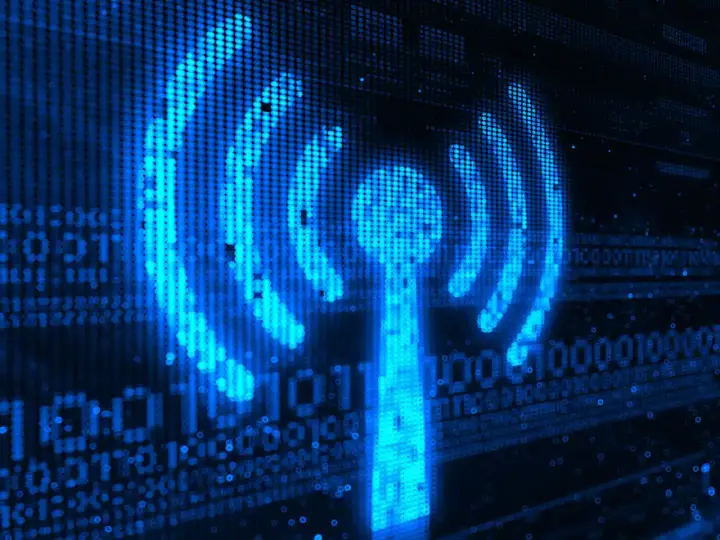3 Simple Ways To Extend Zigbee Range
Updated on 26th Nov 2020 16:51 in General, Smart
Zigbee is a protocol that has gained a foothold in the smart home market with products like the Amazon Echo, relying on it to function at all. As with any wireless system, there is a maximum range in which the signal will be able to travel. Anything further away will not be connected to the network and hence not be controlled. How do you extend the range? Maybe use a Zigbee range extender? Do those even exist? Let's find out how regular devices can be used to extend Zigbee's range!

Disclaimer: This post contains affiliate links. As an Amazon Associate, I earn from qualifying purchases.
Do Zigbee networks even need extending?
An interesting point is the fact that Zigbee is a mesh network, which is where each node directly talks to other nodes to send messages back and forwards. As there isn't a central point of contact, the range will typically be a lot greater than something like WiFi. Since Zigbee creates a mesh, all devices on the network should be able to reach at least one neighbour that will have a path back to the hub. In real life, it is rarely that easy. There are all sorts of factors that come into play to make this question a lot more complicated to answer than it seems to be.
For one, devices which are powered by batteries do not act as repeaters. This is because power draw of constantly rebroadcasting incoming signals is too high and would drain the batteries really fast. So that means that only plugged-in devices will work to repeat the signal, but even then they will still need to be close enough together. The reason most are looking for a repeater in the first place is that the devices on the network are too far apart. Another factor to consider is the signal penetration; as with really thick walls, the signal will likely not be able to get through.
How to extend Zigbee range
There are a few ways to extend the range of your Zigbee network, with each having benefits and drawbacks that may sway your choice towards one or the other. Unfortunately, there isn't a single recommendation for everyone as the options vary too much. You can use almost any plugged-in Zigbee device to extend the signal, but keep in mind that some will be more economical than others - sometimes by a lot. Another point to consider is that some devices may not even work with your specific system, despite being Zigbee compatible! That's because Zigbee isn't a communications standard (unlike Z-Wave), so each ecosystem has its own method that isn't compatible with others.
The best bet is to get something compatible with your system (SmartThings, Echo, etc..) as those will know how to communicate with the other devices for sure. There are three common ways to extend your Zigbee network that we will detail here.
Zigbee Smart Bulbs
This method is not the best due to its position first as a light fixture rather than something that should stay powered on at all times. As an example, someone could power off the bulb using the switch which would then stop parts of the Zigbee network from working properly. Obviously, no one should be turning off a smart bulb with a mechanical switch, but as many will tell you it still happens all the time. That means it's not an ideal method of extending the signal, but it will work if there are no other options available.
Bulbs are a good option for extending the signal in strange places like closets or sheds which may not have electrical sockets. Since most locations that people will visit need to be lit, there will almost always be a light socket available. For those situations, a smart bulb is perfect to repeat the signal as it will also provide smart lighting for the location while also getting around issues like the lack of wall sockets. If you need to get a Zigbee signal outside, bulbs are a good option - just be sure no one powers them off!
The SYLVANIA Zigbee Smart Bulb is a perfect example of the kind of bulb you'll want to get if you are planning on extending your network using bulbs. It is otherwise a regular smart bulb but is relatively cheap and will act as a repeater so long as it is powered. It works out of the box with SmartThings or Amazon Echo Plus, making it a good choice for those platforms.
Checkout the SYLVANIA Zigbee Smart Bulb on Amazon!
Zigbee Smart Plug
Smart plugs are probably one of the best extenders out there. So long as they are plugged in, they will extend a Zigbee network without a problem. Since most electrical outlets will always have power, there won't be the same issue as with the bulbs where all of a sudden they could fall off the network. If they do lose power though, chances are all your other devices did too in which case there is nothing to control anyways. Most modern homes will have electrical outlets pretty much everywhere, making it easy to position smart plugs around the home to get excellent coverage.
Another huge advantage with smart plugs is that they can be used to control something in addition to repeating the signal, which provides a lot more value than other options. They could control a small space heater or a TV in addition to repeating the signal and extending the range of your network. They are also typically super cheap and hardly ever need to be replaced, unlike bulbs which have a smaller lifespan. The only downside is that some remote locations might not have any electrical sockets, which makes it impossible to use in those situations.
The Innr Zigbee Smart Plug is an example of a smart plug that will work wonderfully as a repeater. It is otherwise just a regular plug, but it will extend your wireless signal range so long as it is connected.
Check out the Innr Smart Plug on Amazon!
Zigbee dedicated repeater
These come in all sorts of shapes and sizes, but all of them will be powered from the wall. Some have a USB plug and can be powered from any USB port while others plug directly into the wall. Keep in mind that while USB models could, in theory, be powered from a battery bank, you don't want to do that as it will be drained really quickly. Transmitting wireless signals consumes a lot of power and running in repeater mode means the device is constantly transmitting, which will eat through any battery. That's also why you won't see any battery-powered repeaters on the market.
These are actually a bit rarer than the other types on this list as many manufacturers would rather be building more popular products that sell well. That said, some do exist, such as the IKEA TRÅDFRI Signal Repeater which also includes a USB port for charging any device. One thing to keep in mind is that this product is roughly the same price as the smart plug, which will also act as a repeater, which makes it worth considering the utility of each one. Another option is the USB powered Smartenit Zigbee Range Extender, which looks more like a dongle but costs a lot more. In general, these are a lot more expensive than other options considering you can't use them for any other purpose!
Which should you use?
Each one has its own benefits, but generally, you will probably want to use the smart plug first due to its low price and high utility, along with its use of an always-on power supply. Then if you can't use those, smart bulbs are a good next option. They can be installed virtually anywhere there is light (most places) and are typically inexpensive. They aren't perfect because there is usually a way to turn them off accidentally, which is a big problem if they are being used as repeaters. Finally, dedicated repeaters can also be used - though they should always be last on the list.
You typically can't use a dedicated repeater for anything other than repeating the signal, making them quite expensive as other devices do that while also providing other functions. In most cases, any one of the other listed devices will do the job just fine while also providing you with a benefit such as smart lighting or remote-controlled heat. Overall, only go for the repeater if you have no other option. Otherwise, a smart plug will work for you just fine! Make sure to keep in mind the fact that not every Zigbee device will work with your hub, so be sure to find ones that do!
Summary
To make things really easy, here is a table to summarize the recommendations provided in this article.
| Device | Advantage | Drawback | Cost | Recommended |
|---|---|---|---|---|
| Smart Plug | Always powered, cheap | Not every location has electrical sockets | $ | Top pick |
| Smart Bulb | Can be used in almost every location | Can accidentally be turned off | $ | Second pick |
| Dedicated repeater | Will usually work as advertised | Expensive and only does one thing | $$ | Not recommended |





